De Havilland Mosquito FB VI (LR339 - code DM-?)
Bénodet, "Keranguyon farm" (29)
(contributors : Frédéric Hénoff, Renan Clorennec, Daniel Dahiot, Philippe Dufrasne, Commonwealth War Graves Commission (CWGC))
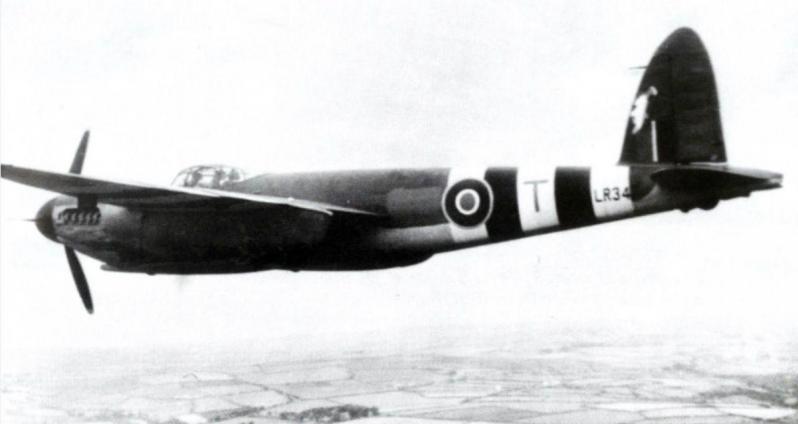 De Havilland Mosquito FB VI LR347 of F/Lt. S.G. NUNN returning from another mission on July 16, 1944..
De Havilland Mosquito FB VI LR347 of F/Lt. S.G. NUNN returning from another mission on July 16, 1944..
The left engine propeller is feathered and the tail is hit by the Flak. The plane crashed at Portreath when coming back.
The F/Lt. S.G. NUNN was also on a anti-shipping mission on July 4, 1944 from Brest to the Gironde but with the Mosquito MM399 code S.
Photo with courtesy of Aircrewremembered.com
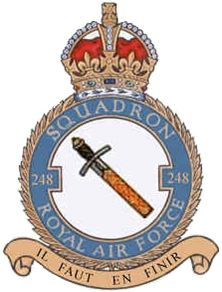 Crew : 248 Squadron RAF
Crew : 248 Squadron RAF
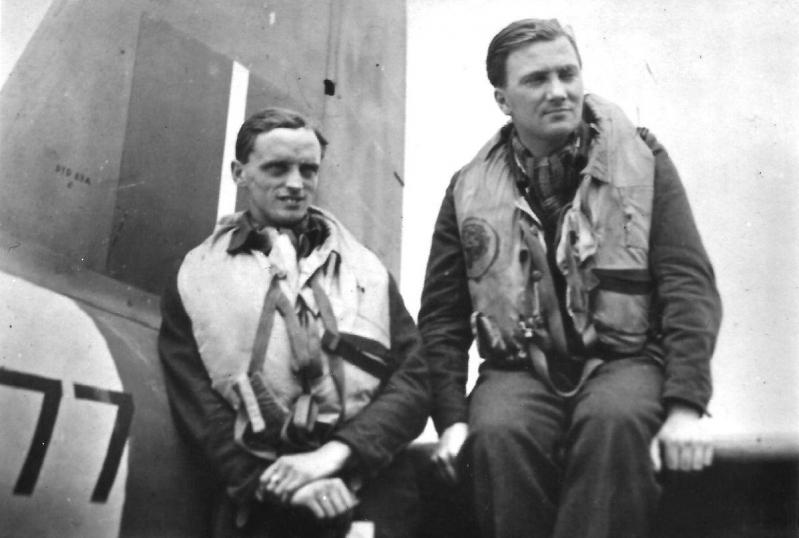
Robert Wylie Thomson (left) and Anthony Dockray Phillips (right)
Photo : collection Frédéric Hénoff via famille Phillips
- Wing Commander (pilot) Anthony Dolkray PHILLIPS, 26 years old - RAF Volunteer Reserve (service number 70539), DSO/DFC
Benodet Communal Cemetery
- Flying Officer (navigator) Robert Wylie THOMSON, 31 years old - RAF Volunteer Reserve (service number 138057) DFC
Son of d'Archibald THOMSON and Catherine THOMSON (nee WYLIE) from Rutherglen, South Lanarkshire in Scotland
Benodet Communal Cemetery
THE STORY
4th July 1944. De Havilland Mosquito FBVI - LR339, fallen near Bénodet
On July 4, 1944, a patrol of 3 Mosquitos of No. 248 Squadron took off from the RAF base in Portreath at 11:22 a.m. for a reconnaissance and attack mission of "M" class Minesweepers (spotted some time before) in the Odet river sector. This patrol was made up of the following crews :
- Wing Commander A.D. PHILLIPS and F/O R.W. THOMSON
- S/Ldr M. MAURICE (nickname of french airman Max GUEDJ) and F/O R.A. VOCE
- S/Ldr H.C. RANDALL and F/O J.E. ORCHARD.
At 12:19, the aircrafts spotted 3 ships at the entrance of the river and attacked them with bombs, cannons and machine guns. But W/Cdr PHILLIPS's aircraft was hit by the Flak ; it went down out of control and crashed at 12:20 p.m. on a farm at a place called Kéranguyon. The two occupants of the aircraft were killed.

This photo is both awe-inspiring and moving : it has been taken just a few seconds
after the crash by the third Mosquito - crew of “P” HP132, S / Ldr. H.C. Randall and F / O J.E. Orchard.
Photo : collection Frédéric Hénoff via famille Phillips
Two servants, Yves GLÉMAREC and Yvonne LAURENT, were badly burned and sent to a clinic in Quimper. Yvonne LAURENT died in the evening. Some buildings, two cattle and agricultural equipment were burnt. Max GUEDJ then ordered to leave the sector and the two remaining Mosquitos escaped zigzagging. They observed strikes on the minesweepers but could not remain to see the result of the bombardment. Unfortunately a bomb also fell in the district of Kerceven in Bénodet and a young girl, Mathilde CAPP, had her arm crushed. Several houses were also damaged.
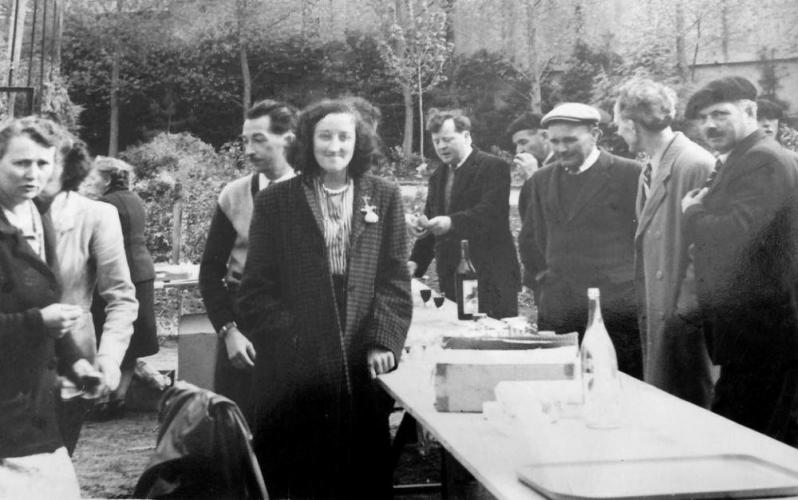
Mathilde Capp the day she was awarded. Besides her husband Noël Coatmen just behind her, we also recognize,
on the right side of the table, Pierre Hyppolite, Jean Merrien, Christophe Bertholom and François Troboé
Photo : collection d'Arlette Cornec via Renan Clorennec
TESTIMONY
Squadron Leader Hal C. Randall, Mosquito HP132 during the mission
(source Frédéric Hénoff with courtesy of Phillips's family)
[...] On July 31, I took Sgt Doughty2 for a reconnaissance on the Groix island and on the way back, I decided to cut through the mainland over the Odet River. I then spot two M-class minesweepers in the river and Jimmy3 took some photos4 which were used the next day when the CO got permission to attack them with three aircrafts. So on July 45, W/Cdr Phillips took Maurice and myself on this mission. We entered the mainland in the Penmarc'h sector (after having bypassed Ouessant). I had to follow the other two, leaving more than 10 seconds between us in order to avoid the blast of their bombs. I circled, reduced throttle, and I still remember the low-level flight over a French farmer on his cart full of hay, hitched to a horse. I turned to follow and reached a tree-lined river and flew up to the treetops. I realized then that I had reduced the throttle too much because the controls responded sluggishly. So full throttle and I was lucky because there was a minesweeper straight ahead. I attacked it with cannon shots, dropped the bombs and flew as low as I could.
During my attack, I saw a Mossie diving on the other minesweeper and saw some smoke. We passed over the burning aircraft and Jimmy took a picture. I cleared over the sea and headed back towards Cornwall. There were low clouds covering the top of the cliffs on the south coast, so I headed west to follow the coast and after passing lightning fast between the shore and Mont Saint-Michel, I asked Jimmy to find a route around Land's End and to Portreath. I heard another aircraft calling for Portreath, and I thought it must have been Maurice, which turned out to be true6. The CO had been shot down and I had the sad task of driving to our old chalet in Polbream, and announcing the sad news to Mrs Phillips.
We had succeeded, as a Reconnaissance Spitfire demonstrated by taking photographs that showed one M-class grounded and the other moored against a dock. My aircraft had been hit with the right engine, hit in the area of the cylinder head cover, but luckily the timing gears had not been damaged. The left engine nacelle was also hit.[...]
1 take-off at 4:50 pm
2 W/O Leslie Cook Doughty
3 F/O James Edward Orchard, Randall's navigator
4 landing at 7:10 pm
5 take-off at 11:20 am
6 landing at 1:15 pm and 1:25
July 4 in Bénodet: various testimonies and press information
(source Renan Clorennec's blog)
• Article from "Le Télégramme" written by de Roger Philippe :
" On July 4, 1944, around noon, the alarm siren announced to the inhabitants of Bénodet that a new raid was being prepared. A patrol of three Mosquitos, of No. 248 Squadron of the Royal Air Force took off from Portreath in Cornwall and aimed to destroy the boats in Penfoul and the dock of Kergaït ".
• Extract from the diary, kept from May to Christmas 1944, by Mrs. Joseph Boissel, owner of the Grand Hotel in Bénodet, that was sent to us by her little niece, Mrs. Geneviève Manciaux, member of Foën Izella. Y. and L. Nicolas.
July 4: Bombing of Kercreven. The little wood in front of the Dauchez villa received two bombs which caused the demolition of the Kerbrat house. "Aunt Anne being away at the time to take her milk, her sister, alone, had the strength to go down into the cellar. Annie was getting ready to go to Kercreven. I was in bed when the crash of this bombardment terrified me, the strongest emotion of my life A boat was cut in half ..."
• Testimony of Jean Capp, Mathilde's brother, collected by René Bleuzen for Foën Izella.
" My father, who was with my sister at Dr Abadie's, told me later on the performance of the German doctor who had arrived there : he cut the dressing already applied, to pinch the vessels and stop the bleeding. My father believed that this intervention had been decisive in avoiding the worst ".
• Articles of "Le Télégramme" written by de Roger Philippe.
" After the explosion, the debris of the aircraft and the ignited gasoline were projected on the buildings of the farm which catched fire. Two employees of the farm, Yves Glémarec and a very young girl, Yvonne Laurent, had climbed a slope to witness the strafing and bombardment. Seeing the falling aircraft coming in their direction, they took cover behind the same embankment. After the shock, the two employees were surrounded by the flaming gasoline which spilled on the ground, and their clothes immediately catched fire ".
" Yves Glémarec immediately rolled on the ground and succeeded in extinguishing the flames. Despite this gesture, he was seriously burned and kept the traces of these terrible burns ".
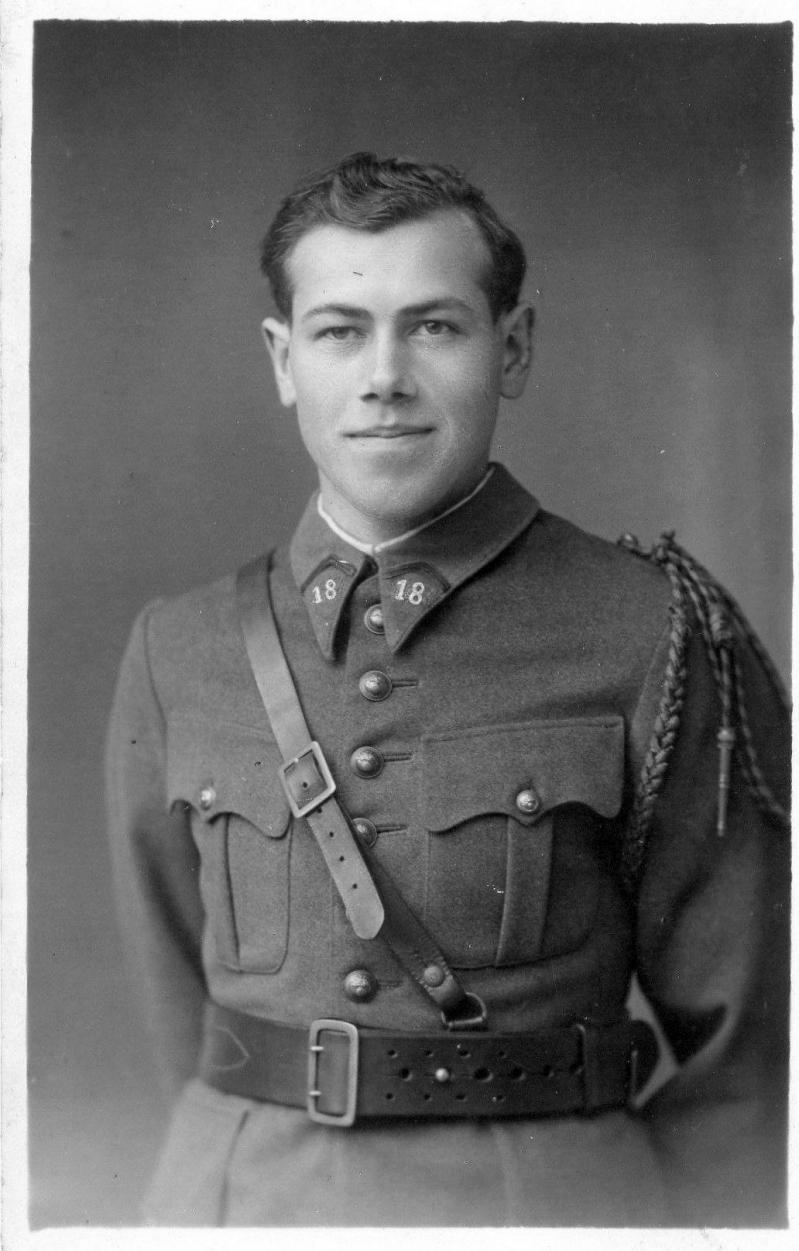
Yves Glemarec
Photo Vincent Berrou via Renan Clorennec
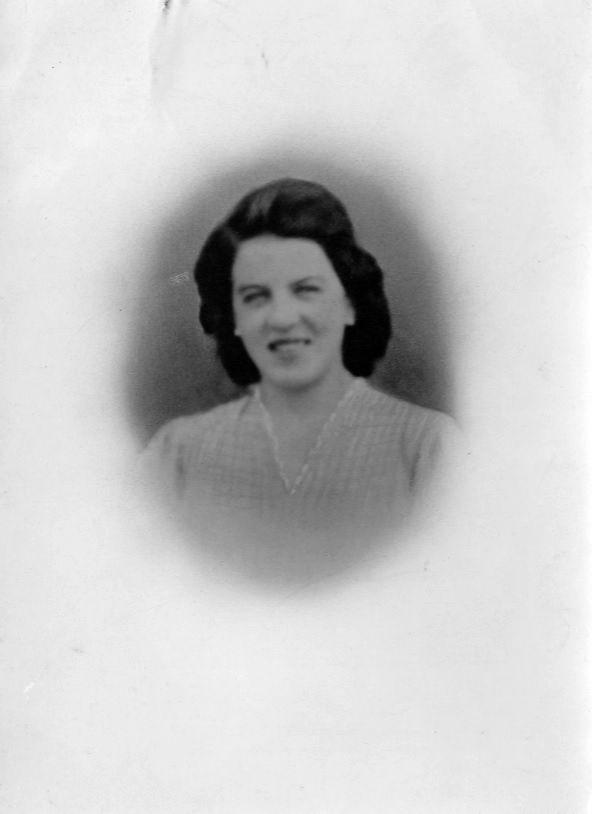
Yvonne Laurent, qui décèdera malhereusement de ses blessures dans une clinique à Quimper.
Photo Vincent Berrou via Renan Clorennec
• Extract from the diary, kept from May to Christmas 1944, by Mrs. Joseph Boissel, owner of the Grand Hotel in Bénodet, that was sent to us by her little niece, Mrs. Geneviève Manciaux, member of Foën Izella. Y. and L. Nicolas.
July 7: " Many people at the funeral of the young girl Laurent, victim of the bombardment. Germaine had made a beautiful cross of roses. The young girls sang. In the cemetery, the two airmen were buried yesterday. Huge tricolor crowns adorn their graves ".
The crash of the English Mosquito in Keranguyon.
(source Renan Clorennec's blog)
• Article of "Le Télégramme" written by Roger Philippe.
" The aircrafts fly low above the masts of the boats and drop their bombs after strafing. But the German Flak installed on the heights of Créac'h Conard (and at Combrit, not far from the west pillar of the bridge - see color map below) is on the watch. and does not remain inactive. And it's rapidy the tragedy. We will never know wether it was a Flak shell that hit one of the aircraft or, as a witness hiding in the "Bois des Garennes" claims, the aircraft flying too low, would have struck the top of the mast of one of the German ships ".

Attack of the Mosquitos of No. 248 Sqn on July 4, 1944 and crash of the Mosquito LR339 near the Keranguyon farm ".
Création de Renan Clorennec
• Testimony of Jean Morvan, collected by René Bleuzen for Foën Izella.
" It was a little after 12:00 am and I just had lunch on July 4, 1944, when the "arsenal" (the Kergaït installations) and the German ships were attacked by Allied aircrafts. I was at the Créach Conard farm, near the German three-piece anti-aircraft battery, installed near the water tower. I saw the departure of the projectiles and I distinguished very clearly the impact of a shell on a low flying aircraft which turned in front of the battery, thus offering itself to the fire of the Flak. ".
• Testimony of Jean Capp, collected by René Bleuzen for Foën Izella.
" I was 16 in 1944. On the morning of July 4, requested by the occupation soldiers, I had worked with a dozen comrades digging holes in the Bodigneau property, at about three kilometers from Bénodet. At noon, we were walking back for lunch, when the air attack on the German ships started. I remember perfectly having seen a ball of fire passing not far from us, from west to east, which I took for a ignited aircraft. We then noticed that the aircraft had fallen near the Keranguyon farm and some buildings were rapidly on fire. In the courtyard laid the bodies of the two English airmen, ejected from their aircraft and killed instantly ".
• Testimony of Ven Guillou, collected by René Bleuzen for Foën Izella.
" On July 4, in front of my home (near the Post Office), when the Allied aircrafts attacked the Bénodet arsenal, I saw an aircraft flying at low altitude which was releasing some smoke. With my comrade Norbert Duigou, I ran to the place of the crash, the farm of Keranguyon with the idea of coming to help the airmen, or even as we were part of the Resistance, to recover weapons. We were among the first to arrive, the ammunition was still exploding and the fragments hit me in the left leg and hand, which necessitated to drive me to the "Sacré Coeur" clinic (in Quimper) where I stayed for eight days. "
• Article of "Le Télégramme" written by Roger Philippe.
" Their bodies were horribly mutilated and remained there for 2 days, the Germans forbidding to touch them. Finally, an officer gave the order to bury them. "
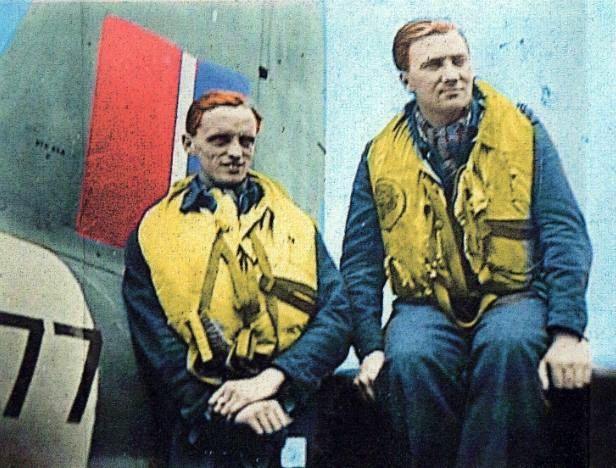
On the left the navigator, Robert Wylie Thomson, 31 years old and on the right the pilot, Anthony Dockray Philips, 26 years old.
Photo given by the mother of the navigator in 1946 to Mrs Marie Berrou, nee Boulis, who kept with her husband Vincent the farm of Keranguyon.
Source Vincent Berrou via Renan Clorennec
• Story by Louis Nicolas about Roger Cuzon who attended the Mosquito crash on July 4, published in the Foën Izella association's newsletter # 44.
(Louis Nicolas, Roger Cuzon, Claude Capron and Norbert Duigou were four friends who decided to join the Resistance in 1943)
" Roger apparently had the privilege to be, by chance, witness of an exceptional event. This day July 4, 1944, at the end of the morning, he was cycling near the farm of Keranguyon, in Bénodet, when machine guns started to open fire ... one of the aircrafts, which was preparing for a second pass, was hit and fell in the vicinity of the farm. Roger immediately rushed to the scene where the debris of the aircraft and the dislocated bodies of the two ejected airmen, probably killed before the crash, were laying. By an astonishing reflex, Roger tried to retrieve the first aid kit and wallet from one of the airmen. He didn't have time to inspect the other victim, the carcass of the aircraft was starting to burn, and then exploded. And the Germans were about to arrive on the scene ... So he decided to run away and joined our base in Gouesnach. He explained to us what had just happened to him, what could have left us skeptical, Claude and I, but we knew so well that Roger was not the kind of guy to say anything; and the exhibits were there, we had examined them :
• In the kit, emergency dressings, that we kept. I had no idea they would be of great help to me soon
• A printed silk square, in the form of a handkerchief, but which, unfolded, occupied an area of nearly two square meters, depicting the map of the French coasts of the Channel and the Atlantic, ports, roads ...
• Various papers ; a box of food rations.
• In the wallet, the aviator's personal papers, family photos and, neatly folded, in a compartment, a brand new 1,000 francs note, probably fake, but somehow official, absolutely correct. We decided to make it our own and put it into circulation as soon as an aging treatment gave it the necessary patina. As for the portfolio and its contents, Roger decided he would hand it over to the International Red Cross, through a channel of his knowledge.
When the war was over, the family of this aviator came to Bénodet to visit the grave and warmly thank "the authorities" who had sent them this memory so quickly ..."
IN MEMORIAM
Since 2012, a street has been named "rue des deux aviateurs" ("airmen street") in Bénodet, near the "avenue des Roseaux" and "rue des Moutons", not far from the crash site.
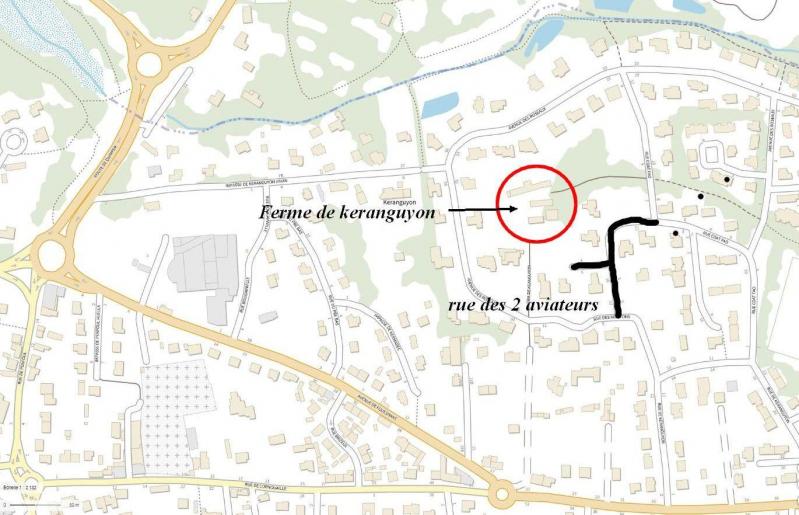
The crash site and the "rue des aviateurs"
map ceated by Renan Clorennec
At Bénodet cemetery
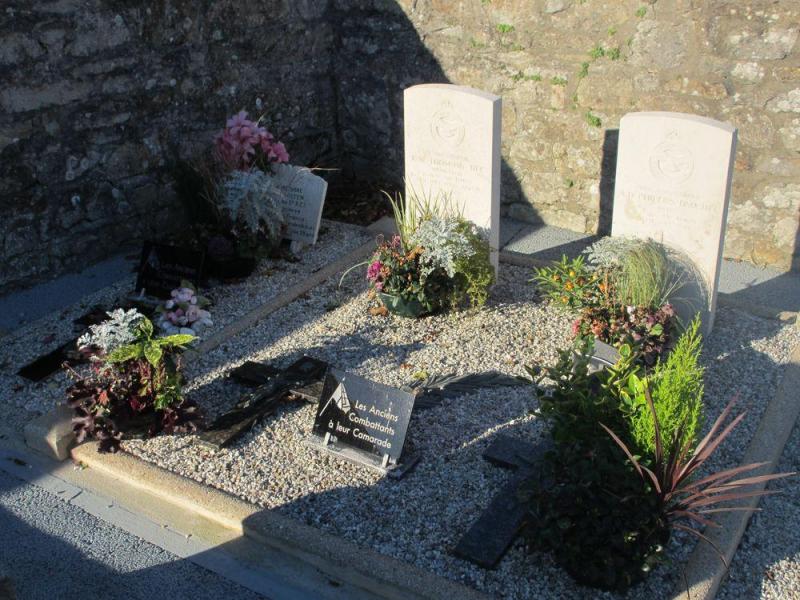
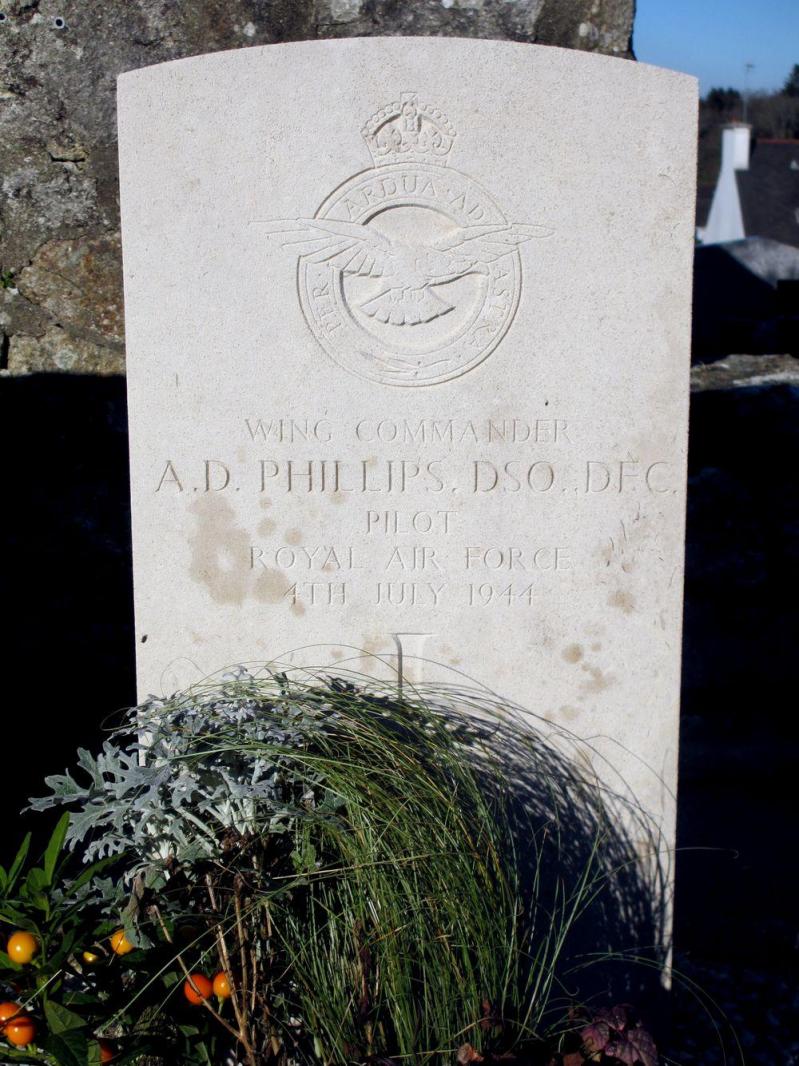
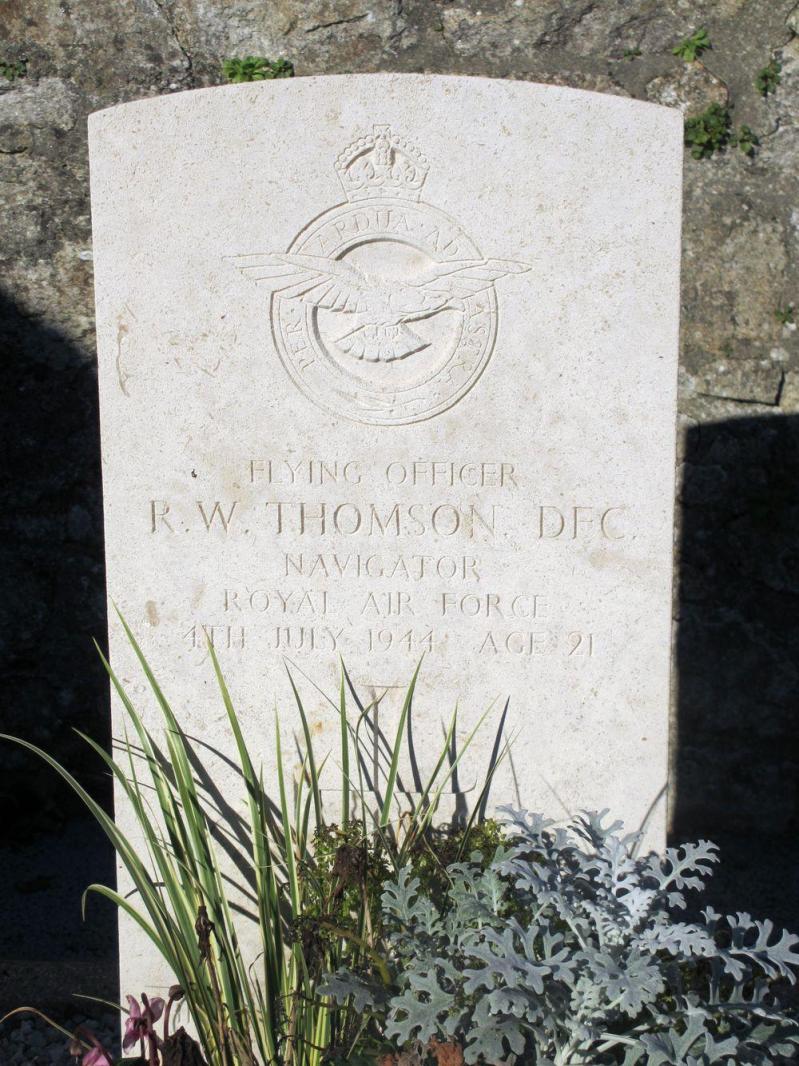
The graves of the two airmen PHILLIPS and THOMSON
Photos Frédéric Hénoff (ABSA 39-45)
IN THE PRESS
Ouest-France - 4th July, 2024

APPENDICE
Extract of the Operations Record Book (ORB) of the missions of July 4, 1944
For some reason, the Wing Commander's Mosquito is incorrectly identified as the HR127 code "F". We do not know if the other Mosquitos are correctly identified (HR261 and HP132, knowing that HP132 probably did not exist, while an HR132 did exist within No. 248 Sqn)
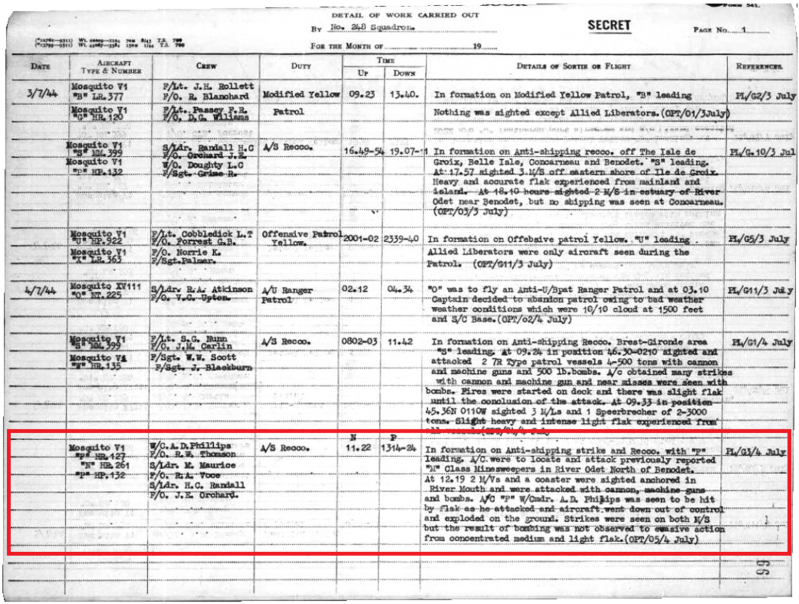
Sources :
- la Fana de l'Aviation n° 626 (janvier 2022) : article of David Méchin on Max Guedj
- Book "La guerre 1939-1945 à Fouesnant - Historique et anecdotes" ("the war 1939-1945 at Fouesnant - History and anecdotes") of Jean-René Canevet
- site France-Crashes 39-45
- Blog "La mer dans les bois", page dedicated to the "July 4th 1944 in Bénodet" by Renan Clorennec
Special thanks to Frédéric Hénoff, Renan Clorennec and via Renan Clorennec to Vincent Berrou, Arlette Cornec, Yvonne Nicolas and the association Foën Izella.
Ajouter un commentaire